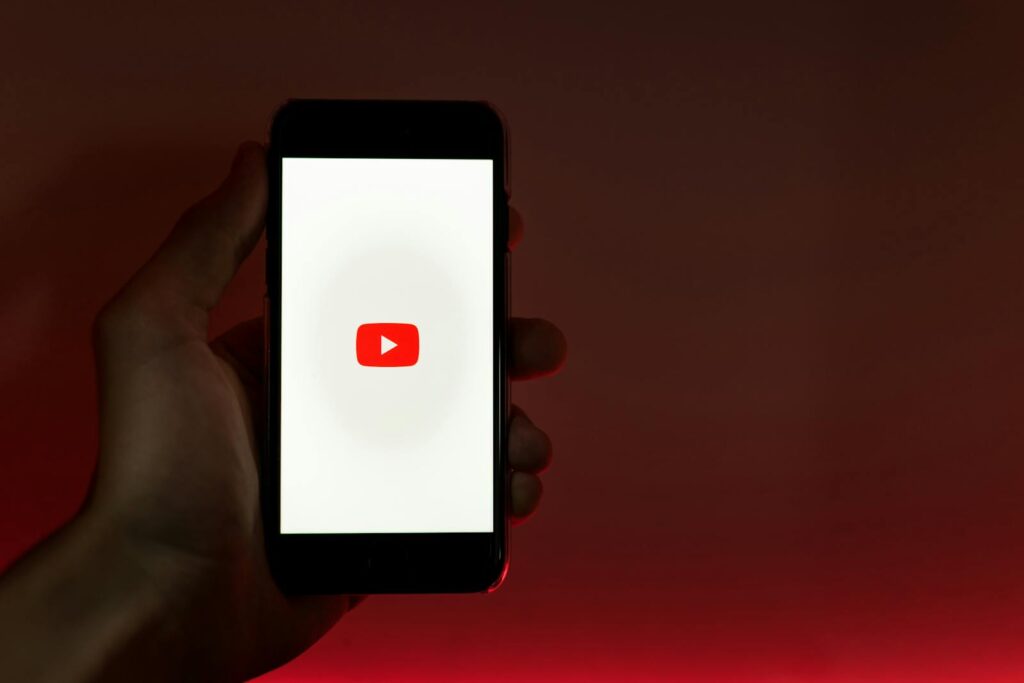YouTube SEO: The Ultimate Guide to Ranking Videos
Did you know YouTube is the second-largest search engine in the world, processing over 3 billion searches per month? With 500+ hours of video uploaded every minute, standing out is tougher than ever. You could have the best content, but without proper SEO, your videos might never get seen.
The good news? YouTube’s algorithm rewards strategic optimization. This guide reveals the proven, up-to-date SEO tactics that top creators use to rank higher, attract more views, and grow their channels in 2025. Ready to beat the competition? Let’s dive in.
What Is YouTube SEO?
Optimizing your videos to appear higher in YouTube’s search results and recommendations is known as YouTube SEO (Search Engine Optimization). Unlike traditional SEO (which focuses on Google text rankings), YouTube SEO combines keywords, engagement signals, and metadata to help the algorithm understand and promote your content.
How YouTube’s Algorithm Works
YouTube prioritizes two key discovery paths:
- Search Rankings – When users type a query, YouTube displays videos based on relevance, engagement, and watch time.
- Suggested Videos – The algorithm recommends content based on user behavior, retention rates, and session time.
YouTube Search vs. Suggested Videos
- Search Optimization relies on titles, descriptions, and tags matching user intent.
- Suggested Videos Optimization depends on watch time, CTR (click-through rate), and audience retention.
Mastering both is crucial for long-term growth.
Why YouTube SEO Matters in 2025
YouTube isn’t slowing down. In 2025, it boasts over 2.7 billion logged-in monthly users, with 70% of watch time driven by recommendations. Here’s why SEO is non-negotiable:
- Visibility – Properly optimized videos appear in search and suggested feeds, increasing reach.
- Monetization – Higher rankings = more views = more ad revenue & sponsorship opportunities.
- Subscriber Growth – Ranking well attracts loyal viewers who convert into subscribers.
Recent Algorithm & Behavior Shifts
- Short-form dominance – YouTube Shorts now influence long-form video recommendations.
- AI-powered suggestions – The algorithm prioritizes personalized, high-retention content.
- Voice search growth – Optimizing for natural language queries is becoming essential.
If you’re not optimizing for YouTube SEO in 2025, you’re leaving views and money on the table. The next sections will show you exactly how to fix that.
YouTube Ranking Factors (2025 Edition)
To rank higher on YouTube in 2025, you need to understand how the algorithm evaluates and prioritizes videos. Here’s a breakdown of the most critical ranking factors, backed by data and expert insights.
1. Watch Time (Most Important)
YouTube wants viewers to stay on the platform longer. Videos with higher watch time signal quality content, making them rank better.
- Longer videos (10+ minutes) often perform better if they maintain high retention.
- YouTube Shorts now factor into overall watch time for channel growth.
2. Click-Through Rate (CTR)
CTR measures how often users click on your video after seeing it. A high CTR (5-15%) tells YouTube your thumbnail and title are compelling.
- Low CTR? Your video may get buried, even if it has good watch time.
3. Audience Retention
- 70 %+ retention is strong (especially in the first 30 seconds).
- Below 50%? YouTube may stop recommending your video.
4. Engagement (Likes, Comments, Shares)
- Likes & dislikes still influence rankings (but dislikes hurt less than before).
- Comments (especially meaningful discussions) boost visibility.
- Shares extend reach beyond YouTube (social media, messaging apps).
5. Relevance (Keywords & Metadata)
- Titles, descriptions, and tags must align with search intent.
- Misleading metadata? YouTube may demote your video.
6. Channel Authority
- Established channels with consistent uploads & strong performance rank more easily.
- New channels need higher engagement to compete.
7. Session Time (The Hidden Factor)
If your video keeps viewers watching more videos (on your channel or others), YouTube rewards it with more impressions.

Pre-Upload Optimization (Before Hitting Publish)
SEO starts before you upload. Follow these steps to maximize rankings:
1. Keyword Research (Find High-Traffic, Low-Competition Topics)
- Tools: TubeBuddy, VidIQ, or YouTube’s search suggestions.
- Look for:
- High search volume (but not oversaturated).
- Low competition (check if top-ranking videos have low engagement).
2. Choose the Right Video Topic
- Answer common questions (e.g., “How to edit YouTube Shorts in CapCut 2025”).
- Trending topics (use Google Trends or YouTube’s “Breaking News” section).
3. Write an SEO-Friendly Script
- Include keywords naturally (the first 100 words matter most).
- Hook viewers fast (the first 10 seconds should grab attention).
4. Name Your Video File Correctly
- Bad: VID_1234.mp4
- Good: *youtube-seo-tips-2025.mp4* (helps YouTube understand content).
Pro Tip: Upload a premiere or private first, then optimize metadata before going public.
On-Page Optimization (Metadata Mastery)
Once your video is ready, optimize every element for maximum reach.
1. Title Optimization (Click-Worthy + SEO-Friendly)
- Ideal length: 50-60 characters (avoids truncation).
- Place keywords early (e.g., “YouTube SEO Tips 2025: Get More Views FAST”).
- Use power words (“Proven,” “Ultimate,” “Secret”).
Bad: “How to Get Views”
Good: “10 YouTube SEO Hacks That TRIPLED My Views (2025)”
2. Description (Hidden SEO Goldmine)
- The first 125 characters appear in search, including keywords + a CTA.
- Add timestamps (helps YouTube understand content structure).
- Links to related videos/playlists (boosts session time).
3. Tags (Don’t Overdo It)
- 5-10 relevant tags max (first tag = most important).
- Mix broad + long-tail keywords (e.g., “YouTube SEO,” “How to rank YouTube videos 2025”).
4. Thumbnails (Maximize CTR)
- High contrast + readable text (even on mobile).
- Faces & emotions work best (create connection).
- A/B test thumbnails (use YouTube’s thumbnail tester).
5. Playlists (Boost Watch Time)
- Group related videos (e.g., “YouTube SEO Masterclass”).
- The auto-play feature keeps viewers watching longer.
Final Tip: Update old videos with new keywords & thumbnails, YouTube rewards fresh content!
By following these steps, you’ll rank higher, get more views, and grow faster in 2025.
Boosting Engagement & Retention (The Secret Sauce)
YouTube’s algorithm loves videos that keep people watching. Here’s how to master engagement and retention in 2025:
1. The First 15 Seconds (Make or Break)
- Hook immediately—pose a question, tease a benefit, or show something surprising.
- Avoid long intros (skip the “Hey guys, before we start…”).
2. Scripting for Retention
- Use the “Problem-Agitate-Solve” structure to keep viewers engaged.
- Place key moments every 60-90 seconds (to prevent drop-offs).
3. Strategic CTAs (Call to Action)
- Ask for likes/comments naturally (“Drop a ‘YES’ below if you agree!”).
- Place subscribe reminders at high-retention points (not just the end).
4. End Screens & Cards (Keep Them Watching)
- Link to your best related videos (boosts session time).
- Use cards for key moments (e.g., “Watch this next: How I Got 100K Subs”).
5. Pacing & Editing Tricks
- Cut pauses & filler words (use tools like Descript).
- B-roll & text overlays maintain visual interest.
Pro Tip: Check Audience Retention graphs in YouTube Analytics to identify drop-off points and refine future videos.
Promoting Your Video (Off-Page SEO)
Great SEO alone isn’t enough, you need to promote smartly.
1. Social Media Promotion
- Twitter/LinkedIn: Share key takeaways + video link.
- Instagram Reels: Edit a 30-second teaser (link in bio).
2. Embed in Blog Posts
- Write a detailed guide around your video topic, then embed it.
3. Email Newsletters
- Send to subscribers with a curiosity-driven subject line (“The 2025 YouTube hack no one’s talking about”).
4. Collaborations
- Shoutouts from bigger creators (offer value first—don’t just ask).
- Guest appearances on podcasts or livestreams.
5. Reddit & Quora (Without Being Spammy)
- Answer questions genuinely, then link to your video as a resource.
Hack: Run a $5/day YouTube ad targeting your ideal viewers to boost initial engagement.
Advanced YouTube SEO Tips
1. Schema Markup for Videos
- Helps Google display rich snippets (e.g., video duration, upload date).
2. Google Trends for Perfect Timing
- Launch videos when search interest is rising (e.g., before holidays).
3. YouTube Analytics Deep Dive
- Traffic Sources tab: Double down on what’s working.
- Impressions CTR: Test new thumbnails if below 5%.
4. SRT Captions for SEO
- Upload captions, and YouTube indexes this text for search.
5. Multilingual Subtitles
- Reach global audiences by adding subtitles in Spanish, Hindi, etc.
Insider Move: Update old videos with new keywords & end screens to revive dead traffic.
Common Mistakes to Avoid
- Keyword stuffing (Sounds robotic = bad retention).
- Clickbait thumbnails/titles (High CTR but low retention = algorithm penalty).
- Ignoring mobile viewers (60% of watch time is mobile, use big text in thumbnails).
- Posting inconsistently (Channels with weekly uploads rank better).
- Not tracking analytics (Guessing = slower growth).
Conclusion: Mastering YouTube SEO in 2025
Success on YouTube doesn’t happen by accident – it’s the result of strategic optimization across every stage of your video’s lifecycle. By now, you understand that dominating YouTube search requires a dual focus: crafting content that maximizes watch time and retention while perfecting your technical SEO through metadata and promotion. The most successful creators treat each video as an ongoing project, continually optimizing based on performance data and algorithm trends.



